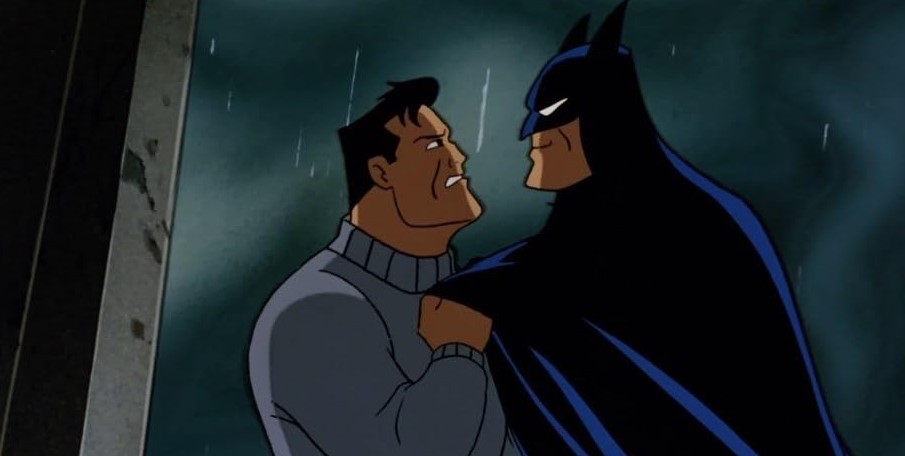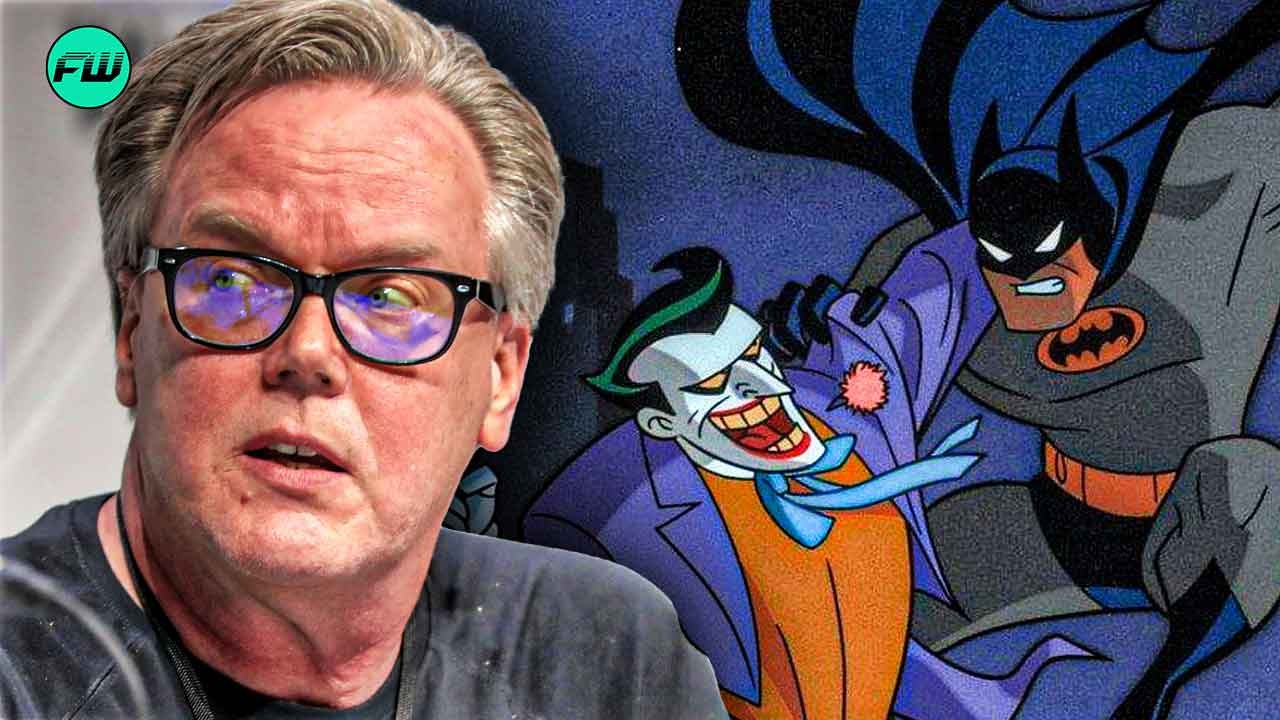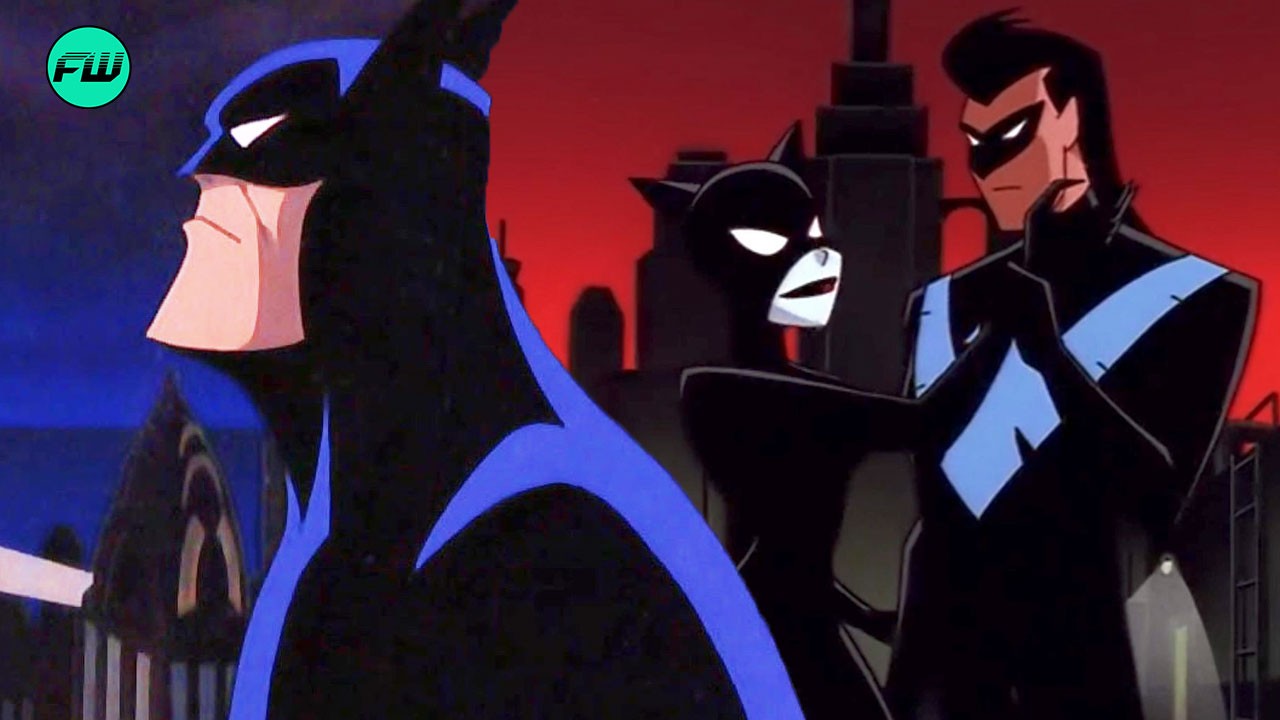Fans of Batman: The Animated Series (BTAS) can expertly recall the show’s gritty, dark tone that distinguished it from other superhero animated series. Bruce Timm, the lead artist and co-creator of the show, is largely responsible for that due to his genius.
But did you know that Timm’s vision for the show was initially met with skepticism and resistance from censors? In fact, Fox’s strict guidelines fueled the producer’s creativity and increased the show’s scare factor. One of the key elements that set the acclaimed animated series apart was its depiction of violence.
As a kids’ program, the Batman Animated Series was not allowed to depict any particular kind of violence or action that younger viewers might attempt when it debuted on Fox in the early 1990s.

But, rather than shying away from the more sinister facets of Gotham City, Timm pushed beyond the limits of what was deemed appropriate for a children’s show. Censors were skeptical of this decision, fearing that the violence would be too intense for younger viewers.
How Fox Altered Batman: The Animated Series’ Fate?
While censorship is never enjoyable for anyone, Fox executives have always seemed to get a bad rep, especially during the 1990s. Indeed, by the time Spiderman: TAS premiered in 1996, “there was a LOT of censorship at Fox”, showrunner John Semper Jr. recalled in an interview.
The company was stricter than ever, especially with regard to children’s programming, after their hugely popular Mighty Morphin Power Rangers were banned in Canada. In Semper’s words:
“When I watch the older episodes of ‘Batman’ that first aired on Fox, they do all kinds of things that we couldn’t do. By the time Spidey came on, Fox wouldn’t let us do anything like that. No fists to the face, no realistic guns, no fire, no crashing through glass, no children in peril, no mention of the words death, die, or kill.”

When Batman: The Animated Series first came out in 1992, it was actually heavily censored; the creators simply came up with creative ways to get around it. Similar to Spiderman: TAS, there was a renowned list of nine things they were not allowed to show.
Mark Hamill tweeted this list, which became immortalized in an infamous illustration by Bruce Timm and Henry Gilroy.
ALL the CENSOR's 🦇 NO-NO's in 1 EPIC BRUCE TIMM DRAWING-Extreme Violence/Drugs/Booze/Nudity/Handguns/Religion/Child Endangerment/Crashing Through Plate-Glass & Face-Punching(!)TheJoker was allowed a Machine Gun because "Kids don't have access to them"🤣 pic.twitter.com/kfRlmoManl
— Mark Hamill (@MarkHamill) January 19, 2018
The list included alcohol, drugs, smoking, breaking glass, guns, n*dity, etc. Timm and Eric Radomski, the co-creators of Batman: TAS, enjoyed a great deal of creative freedom, but they frequently had to bow to the obnoxious Fox censors.
Timm described his long-standing desire to create an episode in which Batman was changed into a vampire in an interview with ScienceFiction:
“There’s a character in the comics called Nocturna! And it didn’t get much past the idea phase, we floated it past Fox Kids and they said ‘Nope! No Vampires!’ and I said, ‘Well what if he wasn’t really a Vampire?’ And they said, ‘No Vampires!’”
Instead of backing down, Timm took advantage of the limitations placed by censors as a creative challenge.
Batman: The Animated Series: Bruce Timm’s Masterful Handling of Censorship
In nine distinct ways, Fox censored Bruce Timm’s Batman: The Animated Series. As previously mentioned, Mark Hamill jokingly pointed out that the censors did not want to show stunts that younger viewers might try or weapons they might be able to obtain (via X).

For example, handguns were prohibited, but submachine guns were permitted since they were harder to obtain. Inadvertently, this increased the threat level of characters like The Joker because, when he attacked Batman, he would have a more potent weapon. Through their ingenuity, writers and artists such as Paul Dini and Timm were able to overcome these constraints, resulting in darker storylines and more menacing villains in the 1992 animated series.
Joker’s venom was mostly more terrifying because it allowed him to kill his victims without having to show it happening on screen. Instead of killing them directly, his venom would cause brain damage or death, leaving his victims with horrifying smiles and fits of laughter. Since Dick Grayson / Robin’s parents can’t be shown dying, the show instead concentrated on his response, which resulted in a more dramatic and tragic scene when describing Robin’s beginnings.
Along these lines, the show had exceptionally strong writing that consistently gave Batman, his allies, and his rogues gallery complex character arcs while also honoring the intelligence of its audience. Having said that, the censorship of Fox did not ever prevent Batman: The Animated Series from succeeding.
Batman: The Animated Series, streaming on Max.




